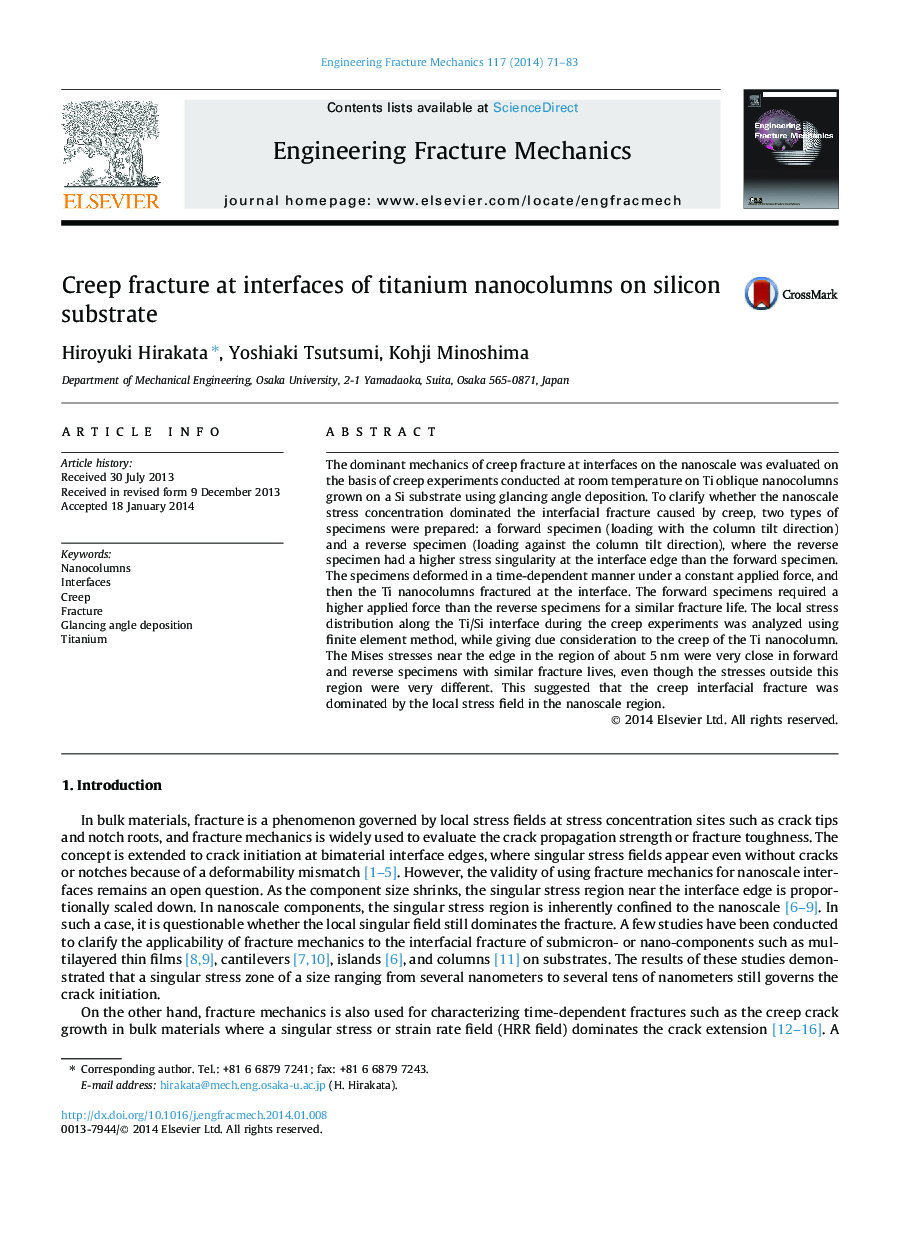| Article ID | Journal | Published Year | Pages | File Type |
|---|---|---|---|---|
| 766967 | Engineering Fracture Mechanics | 2014 | 13 Pages |
•We conducted room temperature creep experiments on Ti nanocolumns grown on a Si substrate.•Ti nanocolumns fractured at the interface by creep under a constant applied force.•The fracture life was dominated by the local stress field in a region of ∼5 nm.
The dominant mechanics of creep fracture at interfaces on the nanoscale was evaluated on the basis of creep experiments conducted at room temperature on Ti oblique nanocolumns grown on a Si substrate using glancing angle deposition. To clarify whether the nanoscale stress concentration dominated the interfacial fracture caused by creep, two types of specimens were prepared: a forward specimen (loading with the column tilt direction) and a reverse specimen (loading against the column tilt direction), where the reverse specimen had a higher stress singularity at the interface edge than the forward specimen. The specimens deformed in a time-dependent manner under a constant applied force, and then the Ti nanocolumns fractured at the interface. The forward specimens required a higher applied force than the reverse specimens for a similar fracture life. The local stress distribution along the Ti/Si interface during the creep experiments was analyzed using finite element method, while giving due consideration to the creep of the Ti nanocolumn. The Mises stresses near the edge in the region of about 5 nm were very close in forward and reverse specimens with similar fracture lives, even though the stresses outside this region were very different. This suggested that the creep interfacial fracture was dominated by the local stress field in the nanoscale region.
